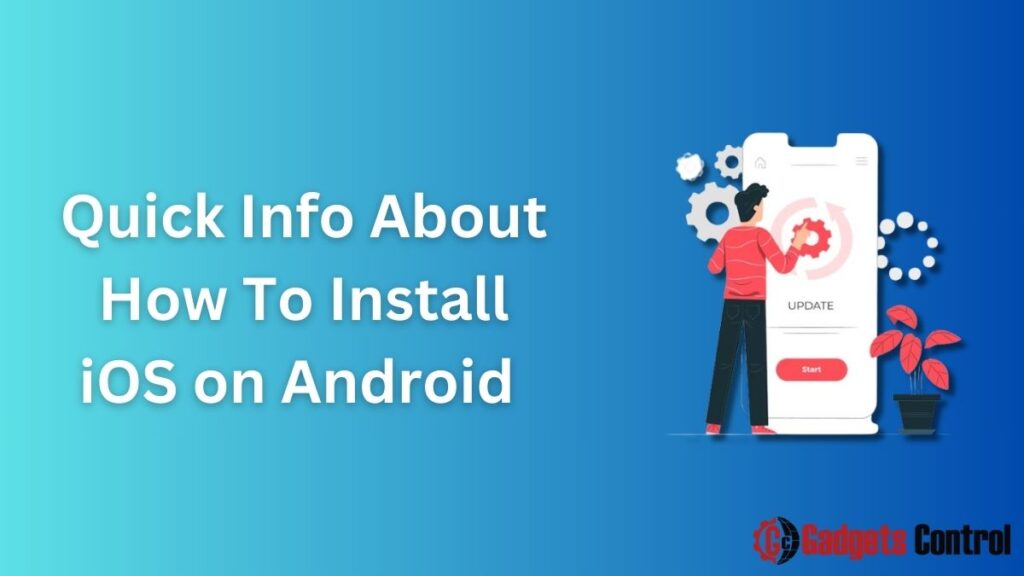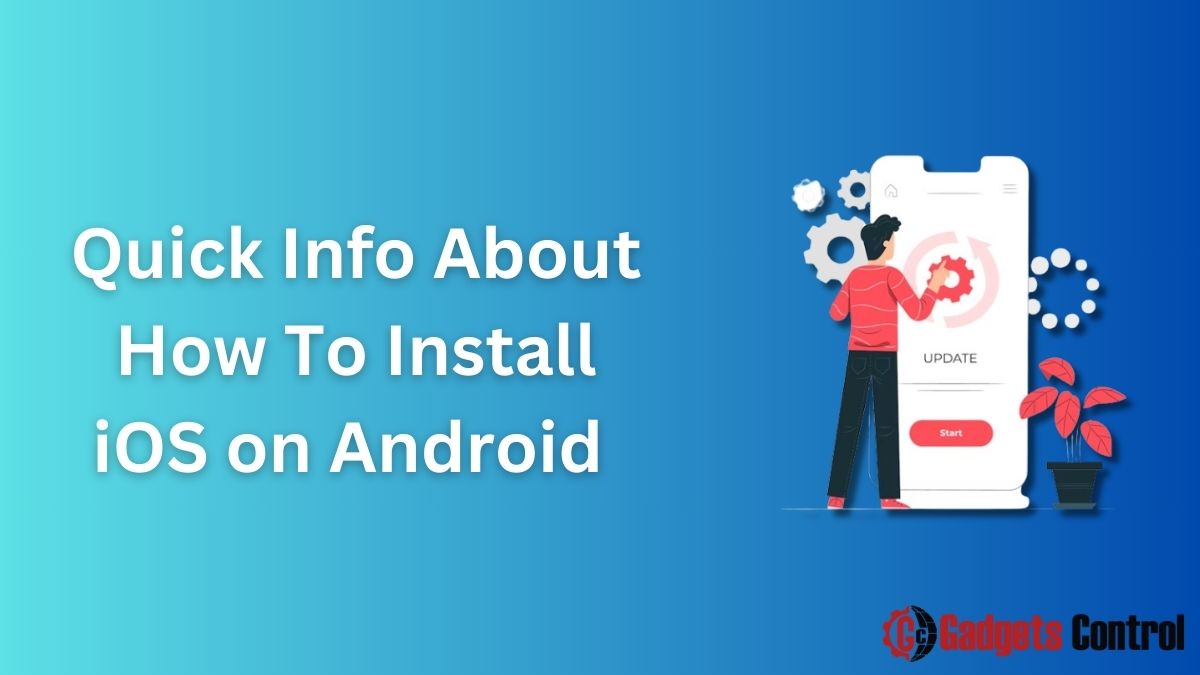Quick Info About How To Install iOS on Android in 2024: In a world where operating systems dominate the landscape of mobile devices, the choice between Android and iOS often feels like a binary one. Android, with its open-source nature and customizable features, appeals to a vast audience. Conversely, iOS, renowned for its seamless user experience and robust security, has its legion of devoted fans.

But what if you find yourself torn between these two giants? Is it possible to merge the best of both worlds and install iOS on an Android device?
Understanding the Challenge
Before delving into the intricacies of Install iOS on an Android device, it’s crucial to grasp the complexities involved. Unlike swapping out a piece of software or tweaking settings, replacing an entire operating system demands a profound understanding of hardware, software compatibility, and potential risks. Furthermore, it’s essential to acknowledge the legal and ethical considerations associated with such endeavors.
Legal and Ethical Considerations
Installing iOS on non-Apple hardware raises significant legal and ethical concerns. Apple’s licensing agreements explicitly prohibit the Install iOS on unauthorized devices. Engaging in such activities not only violates these agreements but may also infringe upon Apple’s intellectual property rights. Additionally, tampering with device software can void warranties and expose users to security risks.
Exploring Alternative Solutions
While a seamless Install iOS on Android remains elusive, several alternative solutions offer a taste of iOS functionality on non-Apple devices:
Install iOS Emulators
iOS emulators simulate the iOS environment on Android devices, allowing users to run Install iOS applications. While these emulators provide access to iOS-exclusive apps, they often suffer from performance issues and limited compatibility.
iOS Launchers
iOS launchers mimic the look and feel of the Install iOS interface on Android devices. By replacing the default Android launcher, users can customize their experience to resemble iOS, complete with app icons, animations, and gestures. While iOS launchers offer cosmetic similarities, they do not alter the underlying operating system.
Custom ROMs
Custom ROMs are modified versions of the Android operating system, designed to emulate the iOS user experience. These ROMs incorporate iOS-inspired design elements, such as icon packs, notification styles, and control center functionalities. While custom ROMs provide a more comprehensive iOS-like experience, they require rooting the device, which can void warranties and compromise security.
Risks and Challenges
Attempting to install iOS on an Android device poses numerous risks and challenges, including:
Hardware Compatibility
iOS is tailored to run exclusively on Apple’s proprietary hardware, optimized for performance and security. Adapting iOS to work on non-Apple devices requires extensive modifications to accommodate different chipsets, drivers, and hardware configurations. Achieving seamless compatibility is a daunting task that often results in unstable performance and hardware limitations.
Software Integration
Install iOS integrates tightly with Apple’s ecosystem of services, including iCloud, iMessage, and FaceTime. Replicating these functionalities on Android devices involves reverse-engineering proprietary protocols and overcoming interoperability barriers. As a result, third-party solutions may lack the seamless integration and reliability of Apple’s native services.
Security Vulnerabilities
iOS is renowned for its robust security architecture, encompassing hardware-based encryption, secure boot processes, and stringent app sandboxing. Attempting to port Install iOS to non-Apple devices exposes users to security vulnerabilities and potential exploits. Without access to Apple’s security updates and patches, these devices may become susceptible to malware, data breaches, and other cyber threats.
Step-by-Step Guide to Installing iOS on Android
While a full-fledged installation of iOS on Android remains unattainable, adventurous users may explore alternative methods to emulate iOS functionality on their devices. The following step-by-step guide outlines one such approach:
Step 1: Research Device Compatibility
Before proceeding, research whether your Android device is compatible with custom ROMs or Install iOS emulation software. Visit online forums, communities, and developer websites to determine if there are existing projects tailored to your device model.
Step 2: Unlock Bootloader and Root Device
To install custom ROMs or modify system files, you’ll need to unlock the bootloader and root your Android device. Be aware that this process varies depending on the device manufacturer and model. Follow detailed guides and tutorials provided by reputable sources to avoid bricking your device or voiding warranties.
Step 3: Backup Data
Before making any modifications to your device, backup all essential data, including contacts, photos, and documents. Rooting and flashing custom ROMs carry inherent risks of data loss or device corruption, so it’s crucial to create backups to safeguard your information.
Step 4: Install Custom Recovery
Custom recoveries such as TWRP (Team Win Recovery Project) enable users to flash custom ROMs and create system backups. Install the appropriate recovery for your device model by following instructions provided by the developer community.
Step 5: Download and Flash Custom ROM
Search for custom ROMs designed to emulate the Install iOS experience on Android devices. Ensure that the ROM is compatible with your device and version of Android. Download the ROM file and transfer it to your device’s internal storage. Boot into recovery mode and flash the custom ROM using the installation instructions provided by the developer.
Step 6: Customize and Configure
Once the custom ROM is installed, customize your device’s settings and preferences to resemble the iOS interface. This may include adjusting the home screen layout, installing iOS-inspired icon packs, and enabling gesture-based navigation.
Step 7: Install iOS Apps and Themes
Explore the Google Play Store and third-party app repositories for iOS-themed applications and themes. While these apps may not replicate the full Install iOS experience, they can enhance the visual aesthetics and functionality of your Android device.
Step 8: Test and Troubleshoot
After customizing your device, thoroughly test its performance, stability, and compatibility with iOS-themed applications. Be prepared to troubleshoot any issues that arise, such as app crashes, system glitches, or hardware malfunctions.
Must Read:
- Risks of Installing Apps from Unknown Sources: Superior Guidelines for Android Users in 2024
- WebWatcher on Android: Comprehensive Guide to Installing and Setting Up in 2024
- Customizing Android to Feature White Backgrounds Instead of Black: Best Methods in 2024
Install iSO Fill On Android related [FAQs]
1. What is “White Short”?
“White Short” is a term used to describe a specific type of garment, typically shorts, that are predominantly white in color. These shorts can vary in style, material, and design, but they share the common characteristic of being primarily white.
2. What styles of shorts are available in “White Short”?
“White Short” styles can range from casual to formal, including:
- Casual Shorts: These are often made from lightweight fabrics like cotton or linen and may feature relaxed fits suitable for everyday wear.
- Sport Shorts: Designed for athletic activities, sport shorts in white may be crafted from moisture-wicking materials like polyester or blends, offering comfort and performance.
- Formal Shorts: For more formal occasions, white shorts may come in tailored or structured designs, sometimes with embellishments like pleats or patterns.
3. How do I style “White Short”?
Styling “White Short” depends on the occasion and personal preference. Here are some tips:
- Casual Look: Pair white shorts with a T-shirt or tank top for a relaxed, summer-ready ensemble. Add sandals or sneakers for a laid-back vibe.
- Sporty Look: Opt for moisture-wicking white shorts paired with a performance tee or tank for workouts or outdoor activities. Complete the look with athletic shoes and accessories like a cap or sunglasses.
- Formal Look: Choose structured white shorts and pair them with a button-down shirt or blouse for a more polished appearance. Add heels or dressy flats and statement jewelry for a touch of sophistication.
4. How do I care for “White Short”?
Proper care ensures the longevity of your “White Short.” Follow these care instructions:
- Read the Label: Always check the care label for specific instructions regarding washing and drying.
- Separate Whites: Wash white shorts separately or with other white garments to prevent color transfer from darker items.
- Use Cold Water: Wash white shorts in cold water to help preserve their brightness and prevent shrinking.
- Avoid Bleach: While bleach can whiten fabrics, it may also weaken fibers and cause yellowing over time. Opt for mild detergents instead.
- Air Dry or Low Heat: Hang white shorts to air dry or use a low heat setting in the dryer to prevent shrinkage and maintain fabric quality.
By following these simple steps, you can keep your “White Short” looking crisp and fresh for many wears to come.
Conclusion
While the allure of running Install iOS on Android devices may seem enticing, the reality is far more complex. Legal, ethical, and technical barriers prevent seamless integration between these disparate operating systems. Instead of pursuing a futile endeavor, users can explore alternative solutions such as iOS emulators, launchers, and custom ROMs to emulate iOS functionality on their Android devices. By understanding the risks and limitations involved, users can make informed decisions and enhance their mobile experience without compromising security or legality.
As technology continues to evolve, so too will the possibilities for cross-platform integration and interoperability. Until then, users can enjoy the best of both worlds by embracing the unique strengths of Android and Install iOS while respecting the boundaries that define each ecosystem.

